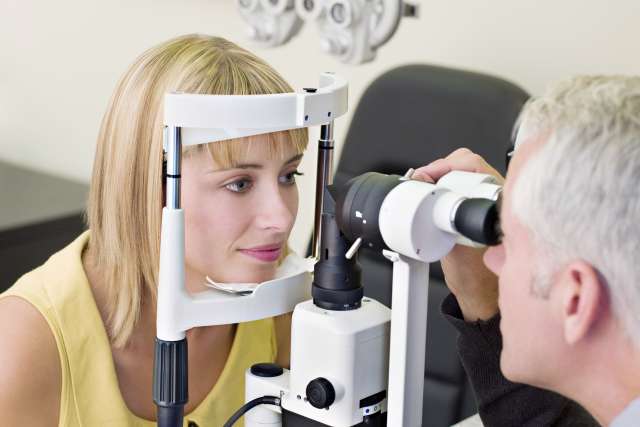Dear Doctors: Lately, we've been seeing a lot of ads on TV for a medication to treat thyroid eye disease. My daughter, who is 23, suffers from dry eyes, and now she's sure she has it. What is thyroid eye disease? How do you get it, and how is it diagnosed?
Dear Reader: Thyroid eye disease is actually quite rare. Here in the United States, the incidence rate is about 19 cases per 100,000 people. It is more than 4 times as common in women as it is in men.
Most cases of thyroid eye disease occur in conjunction with hyperthyroidism, a term that means the thyroid gland has become overactive. A common cause of hyperthyroidism is Graves disease, an autoimmune disease that primarily affects the thyroid gland. The immune system mounts an attack on the tissues of the thyroid gland, which causes it to become hyperactive.
The most common symptom of thyroid eye disease is a retraction of the eyelids, resulting in the appearance of bulging or staring eyes. Additional symptoms can include:
-- Blurred or double vision that does not improve when you blink.
-- Persistently dry or watery eyes.
-- A feeling of grittiness in the eyes.
-- Redness in the eyes or the eyelids.
-- Swelling or fullness in one or both upper eyelids.
-- Pronounced bags beneath the eyes.
-- Pain in or behind the eyes (particularly when looking to the edges of one's vision).
-- Difficulty in moving the eyes.
-- Difficulty tolerating bright light.
The physical changes caused by thyroid eye disease can adversely affect vision and even lead to blindness.
Diagnosis begins with a physical examination of the eyes, including the eyelids. The disease can increase the pressure within the eye. This puts the individual at risk of glaucoma, so a test of intraocular pressure may be requested.
If the collection of physical symptoms suggests thyroid eye disease, the next step is blood tests to check the person's levels of thyroid hormones. Imaging tests of the eyes may be used.
The disease typically occurs in two phases. An initial active phase, marked by ongoing inflammation, lasts from several months to several years. This is followed by a so-called inactive phase, when inflammation has subsided, but symptoms are still present.
Because thyroid eye disease is a complex and multisystemic condition, a group of specialists often work together in its diagnosis and management. This often includes an ophthalmologist, an endocrinologist and an otolaryngologist (or ear, nose and throat specialist). It is advised that each of these specialists have an expertise in thyroid eye disease.
There is no known cure for the condition at this time. That means treatment focuses on managing existing symptoms and monitoring their effect on vision.
The goal in treating thyroid eye disease is to ease discomfort, protect the cornea and preserve sight. Over-the-counter eye drops are often used to ease dryness. Newer medications to ease inflammation, which fall into a class of drugs known as monoclonal antibodies, may also be prescribed.
If your daughter's symptoms suggest she may have thyroid eye disease, she should see her health care provider to begin the process of diagnosis.
(Send your questions to [email protected], or write: Ask the Doctors, c/o UCLA Health Sciences Media Relations, 10960 Wilshire Blvd., Suite 1955, Los Angeles, CA, 90024. Owing to the volume of mail, personal replies cannot be provided.)





